LeBron James vs. Michael Jordan: Comparing Career Scoring Totals

LeBron James scored 31 points Wednesday in the Lakers' 115-99 loss to the Nuggets. It would likely go down as a forgettable result in a season he’d like to forget, save for one major news item: He passed Michael Jordan on the NBA’s all-time career scoring list.
As his 16th season winds down, LeBron has now racked up 32,311 points, even more than the 32,292 points MJ tallied in his 15 regular seasons. LeBron is now fourth all-time in scoring, trailing just Kareem Abdul-Jabbar, Karl Malone and Kobe Bryant.
So today is the day. I will personally make the case that determines which of these two players is better and we will all agree forever. OK, probably not. There are other places on the internet to read those kinds of takes today. Instead I’ll just present some graphs and charts to compare the scoring outputs from these two all-time greats.
1. Total points by age
Here are their career points scored, broken down by age. In this case age means their n-age season, basically the year they were n years old on February 1, which is the way Basketball-Reference displays ages.
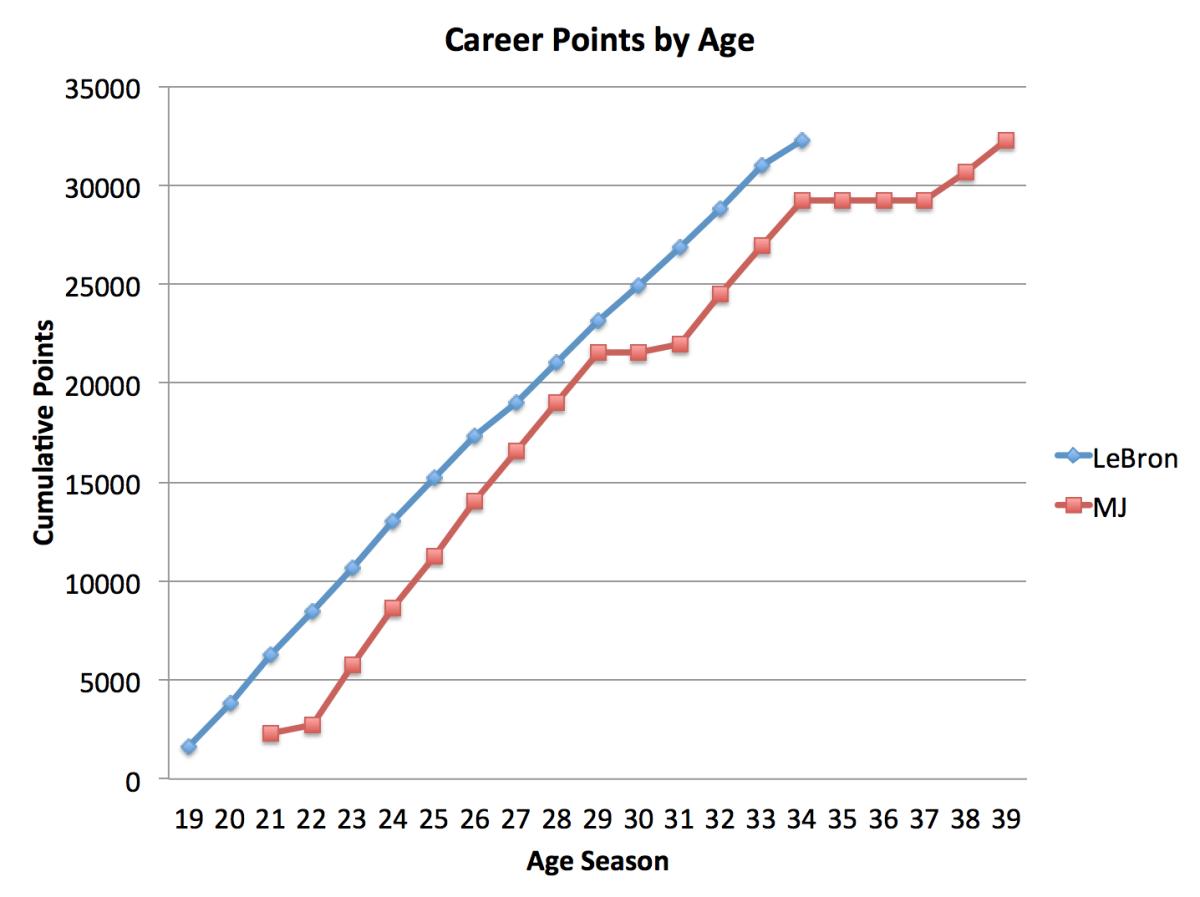
Here you can see the advantage LeBron gained by jumping to the league straight out of high school, as he banked 3,700 points at the same ages that had Jordan wearing Carolina blue.
Then you can see MJ gaining on LeBron until his baseball years (outside of his second season, when he only played 18 games in 1985-86).
Now at 34, LeBron is the same age Jordan was when he finished his Bulls career with a second three-peat.
2. Total points by season
This graph is similar to the one above, but now we go by season instead of age. This takes out the advantage LeBron gets from starting younger and playing all the way through. Jordan’s trajectory is no longer stunted by taking the 1993-94 season off, though you can still see the 1995 year when he played just 17 games in his return from baseball.
By this measure, Jordan was ahead of LeBron when he hung them up after his Wizards stint.
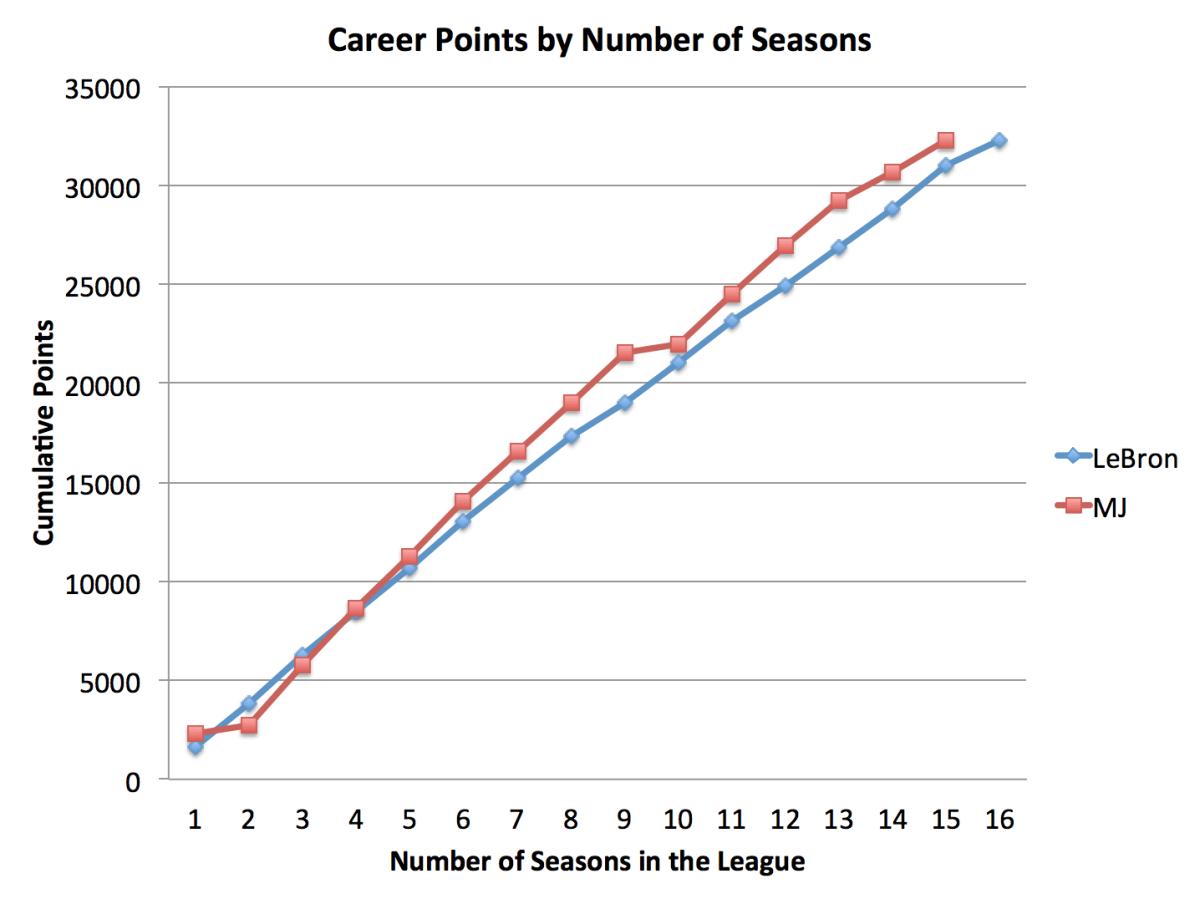
3. Points per game by age
4. Points per game by season
These two graphs are the same as the first two, but instead of using cumulative career points, we’ll use scoring average per game during those seasons.
Again, when Jordan isn’t dinged for the seasons he missed, you can see that his scoring average per season was consistently higher for most of his career.
That’s true either way you break it down, although his scoring averages as a 38- and 39-year-old in Washington, his 14th and 15th seasons, show a noticeable dip.
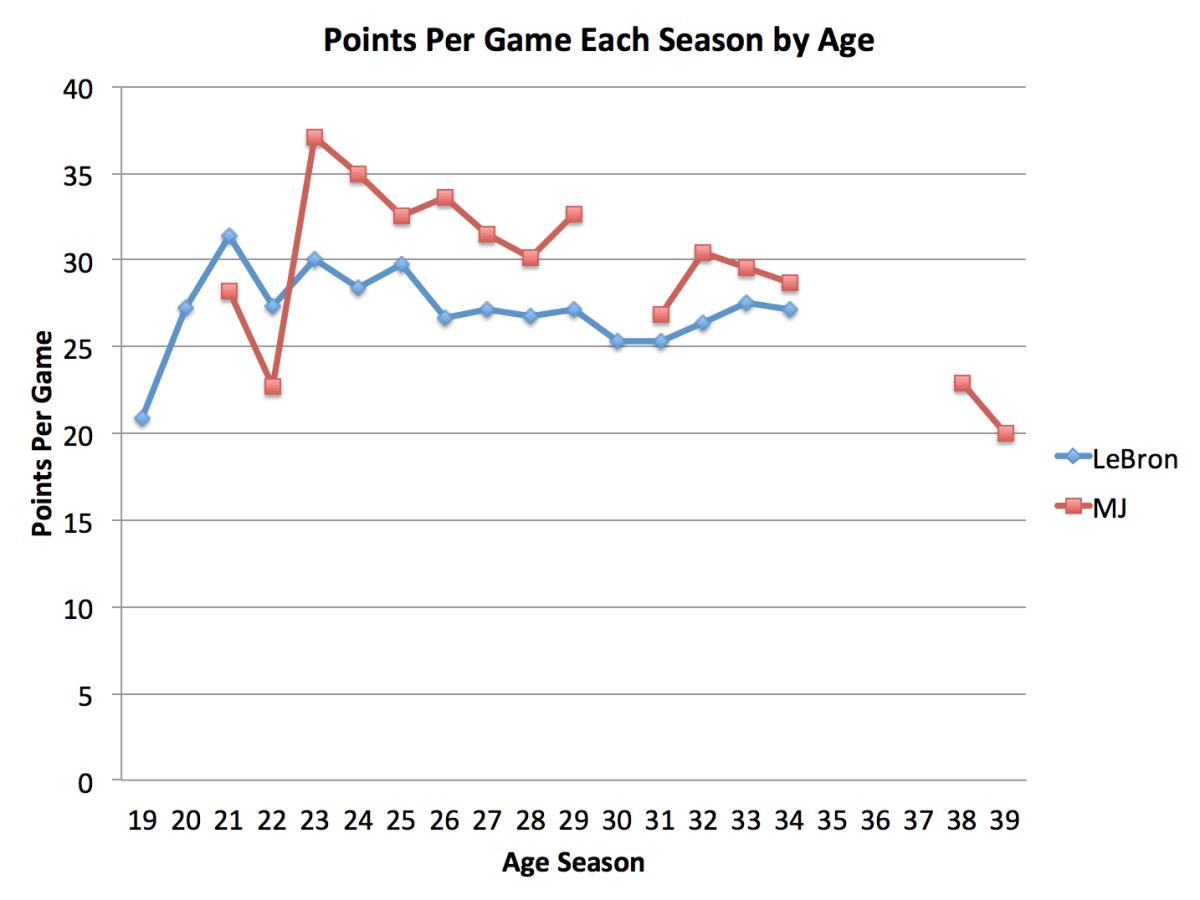
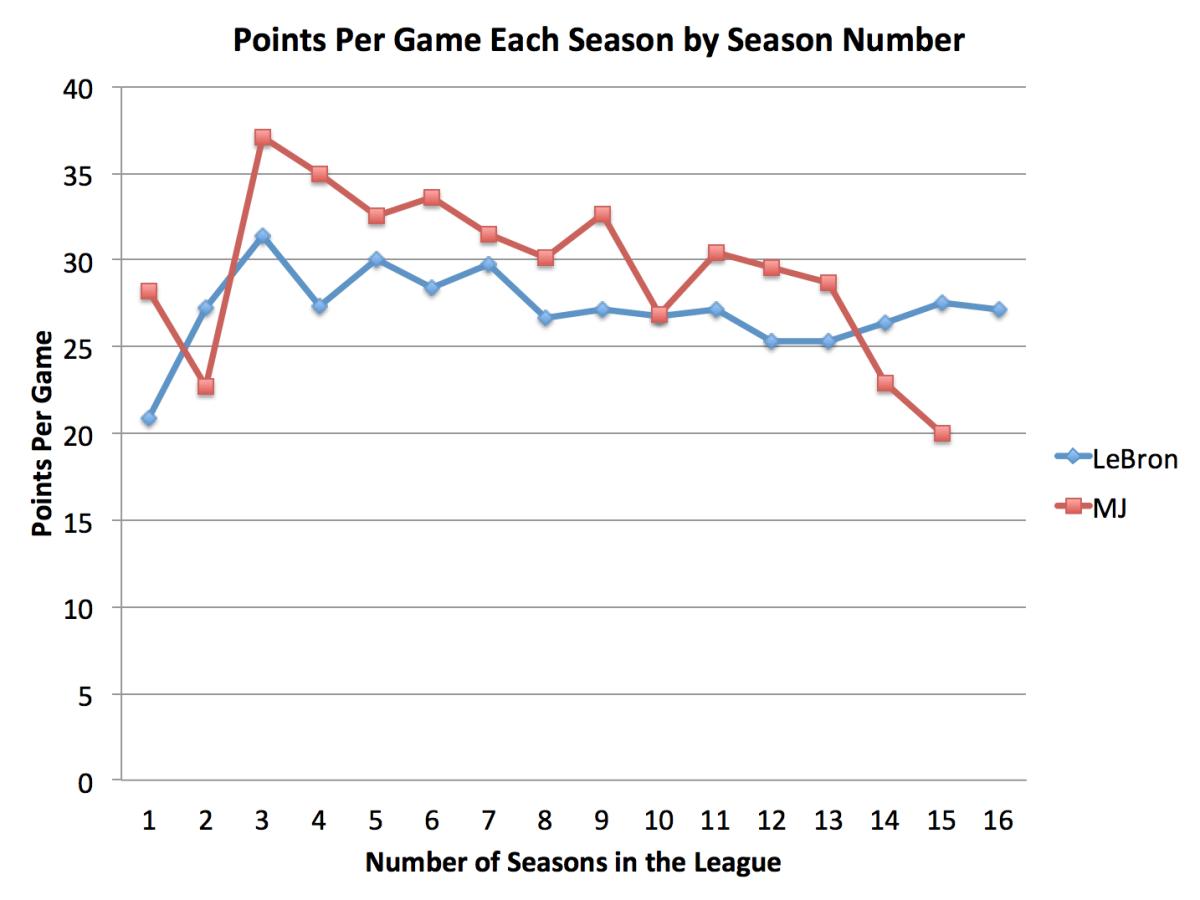
5. Breaking down field goals, free throws and three-pointers
These pie charts basically answer the question: How did they get their points? It shows the career breakdowns for both players, and the percentage of points that came from free throws, two-point field goals and three-pointers.
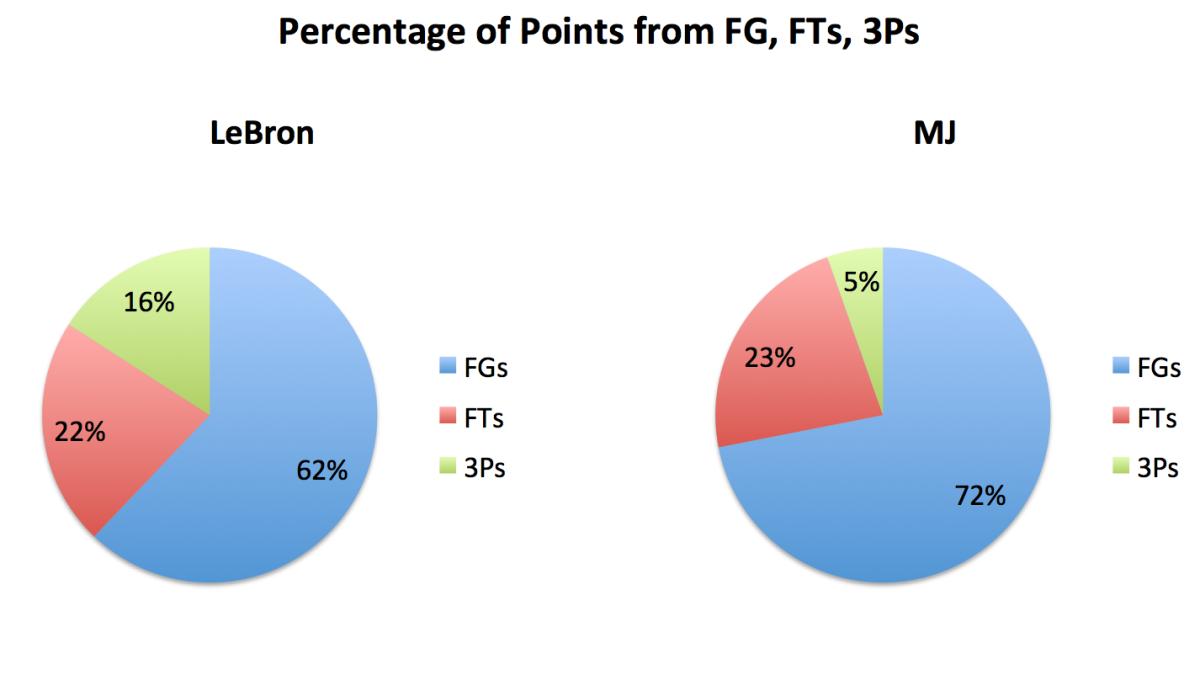
Their free throw output is very close; Jordan made 7,327 and LeBron has made 7,101.
The key difference is three-point shooting. James has made 1,714 three pointers, while Jordan made just 581. Of course that’s a result of them being products of their era. Jordan was a career 32.7% three-point shooter, while James has made a slightly better 34.4%. If Jordan played today, three-point shooting would likely be a bigger emphasis of his game—more attempts and he probably would have gotten even better at it.
6. Breaking down points by team
One of the key differences between their careers is that Jordan spent almost all of his with the Bulls, until his late run with the Wizards. Jordan’s most famous employer swap was from the Bulls to the Birmingham Barons and back, whereas LeBron left Cleveland for Miami, came back and then again moved to Los Angeles.
This graph simply shows how many points they scored in each of their NBA uniforms.
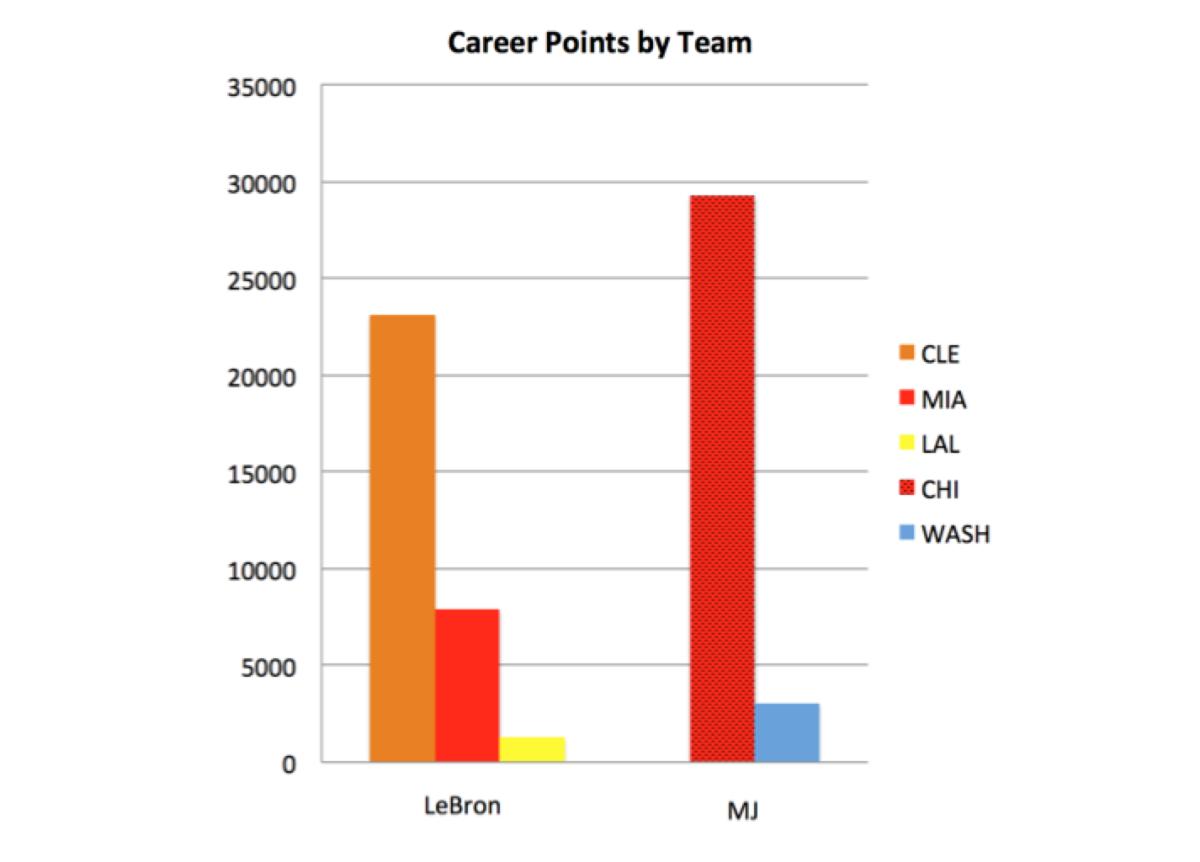
7. Breaking down points by career stop
If you’d like to take the previous graph and break it down further, this time we’ll consider each of LeBron’s stops in Cleveland separately. And while we’re at it, we can carve out Jordan’s pre-baseball and post-baseball eras in Chicago.
Here’s their total output during each of the various chapters in their careers.
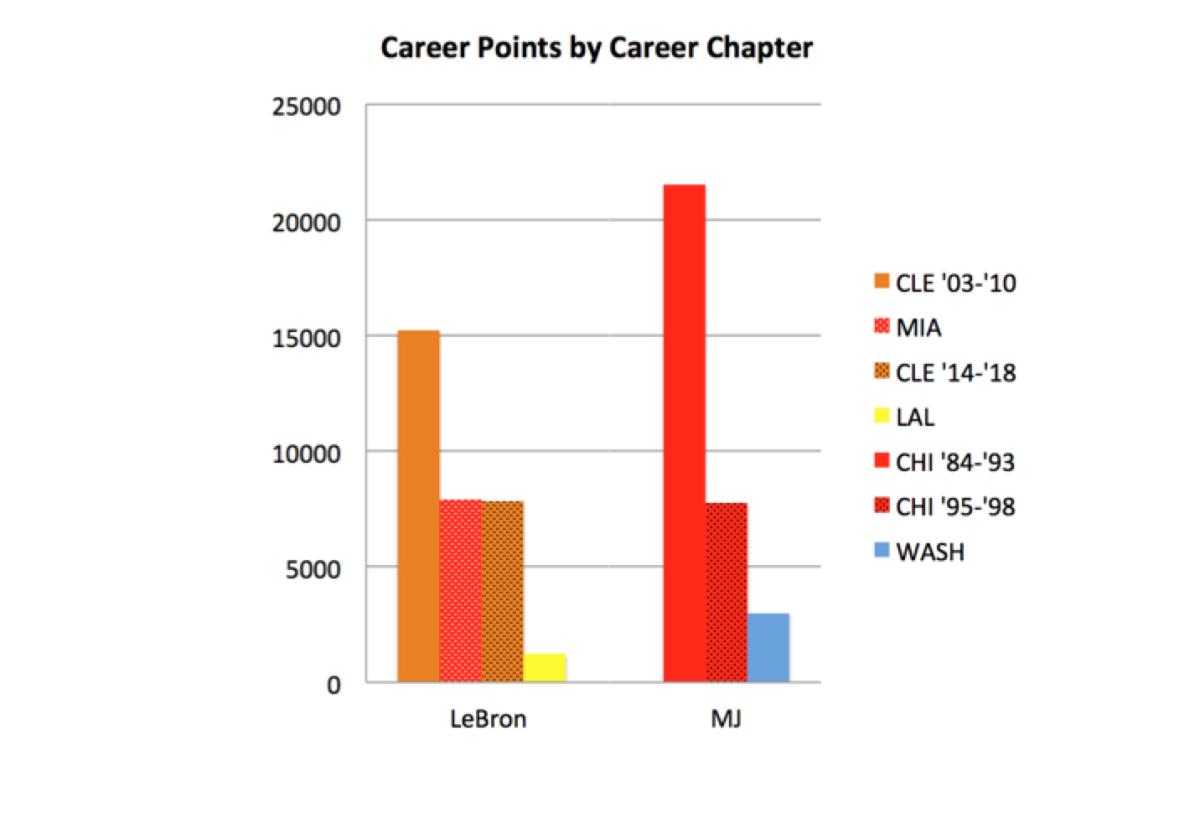
8. Scoring leader race by season
In addition to scoring more per game and more per season relative to LeBron, one thing that stands out about Jordan’s career is the way that he dominated his peers in the scoring race.
Jordan led the NBA in total points 11 times, including every season from 1986-87 through 1997-98 when he wasn’t playing baseball.
LeBron finished second in total points in eight straight seasons from 2004-05 through 2011-12, finishing behind Allen Iverson, Kobe Bryant (3x), Dwyane Wade and Kevin Durant (3x). He didn’t lead the league in total points until last season, his first time playing 82 games.
This graph shows where they finished in the league scoring (total points, not per game), based on the number of times finishing in each spot. Jordan led the league 11 times, every season of his career except the two shortened Bulls seasons and the two Wizards seasons. LeBron only has that one season leading the league, but he was consistently in the Top 5. In fact, his first season in L.A. is his only time out of the Top 10, largely because of how many games he has missed due to injury.
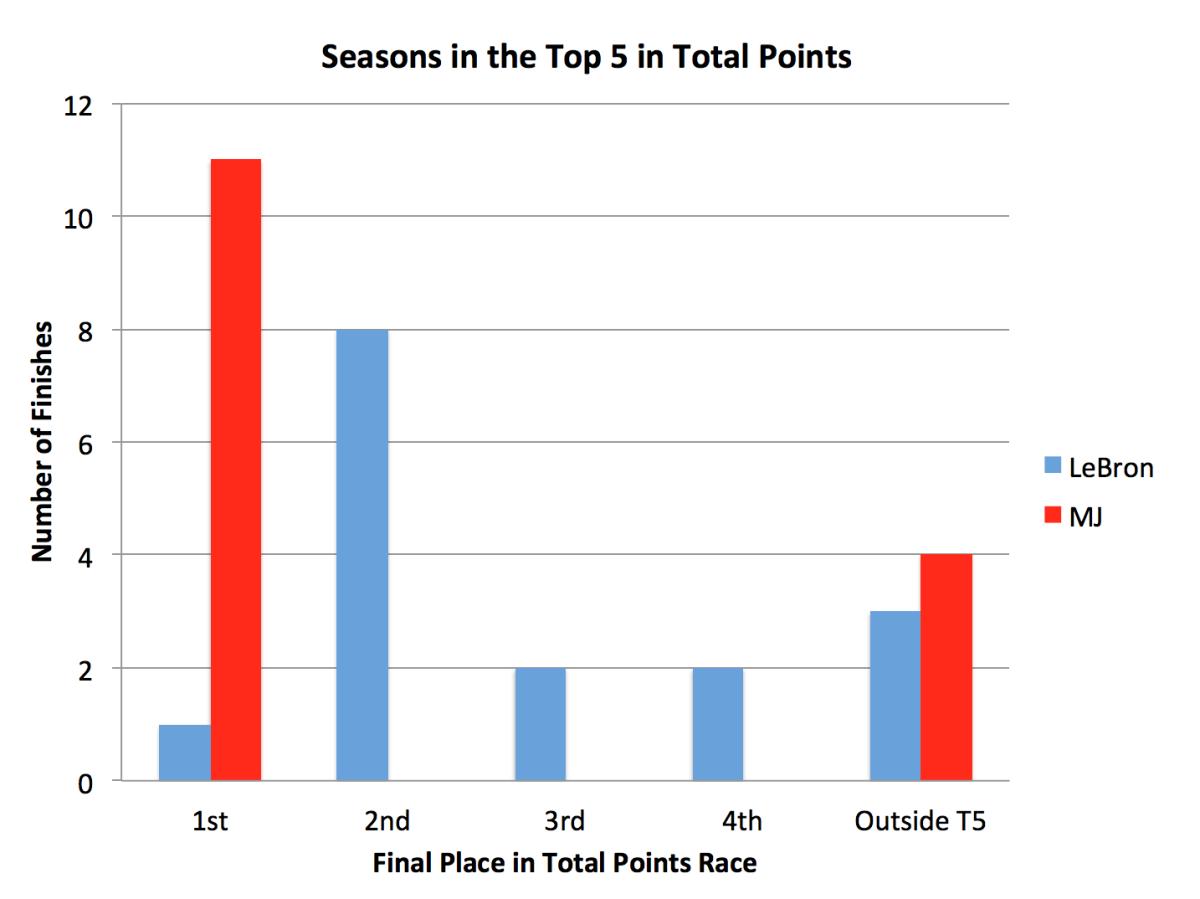
If we used points per game to show where they stood among league leaders, the graph would look very similar. Jordan’s career scoring mark of 30.12 points per game is the all-time record, and MJ won the per game scoring title 10 times. LeBron's mark of 27.15 is fourth all-time, behind Jordan, Wilt Chamberlain and Elgin Baylor. (For now at least. It takes three decimal places to separate James and Durant, and LeBron actually leapfrogged KD on Wednesday.)
But again, none of this is to say that Jordan was better than LeBron. Or vice versa. They each have different careers, different skills and different stories. It would be just as simplistic to boil their entire careers down to total points as it is to reduce their careers down to championship rings. They both deserve to be appreciated for what they’ve done, and on a day that’s natural to compare their scoring output it’s fun to compare their careers in a few different ways.
